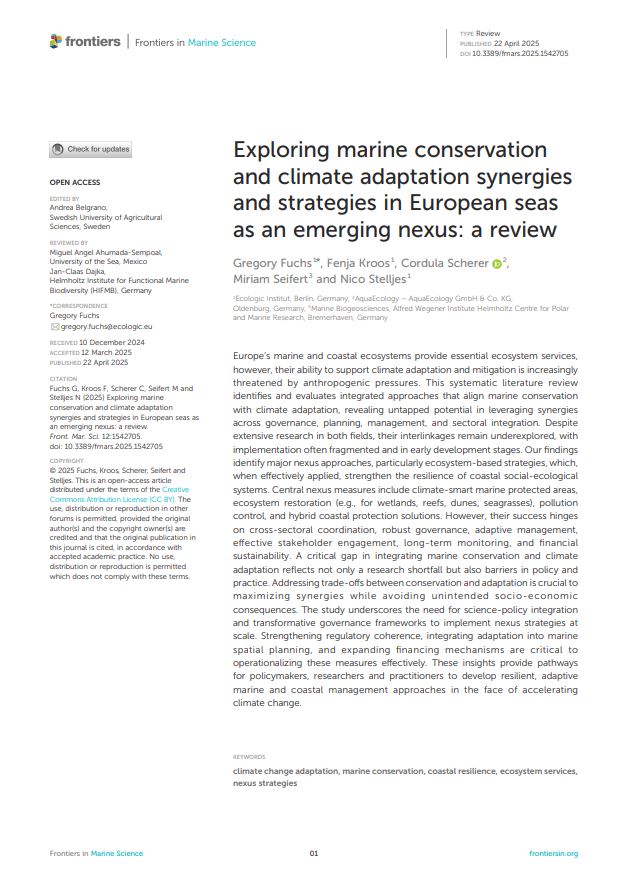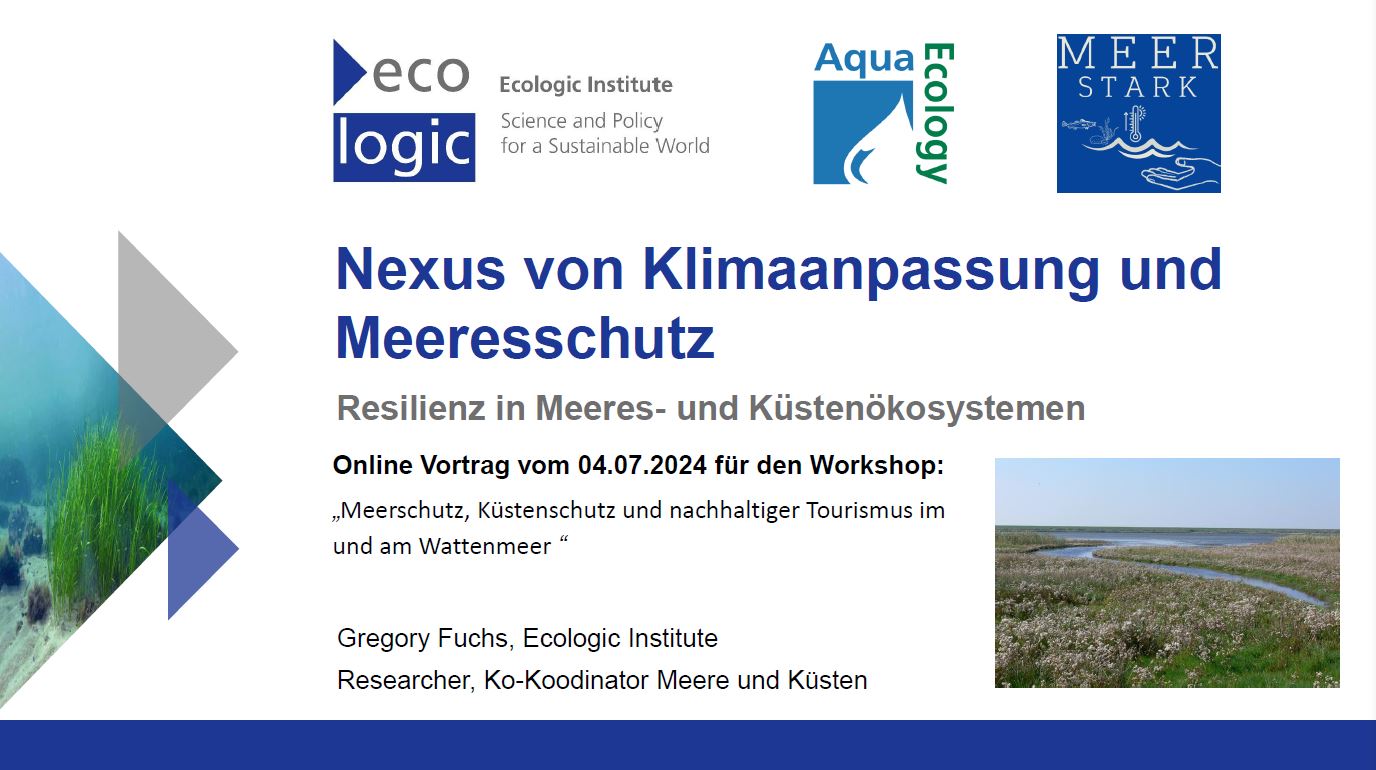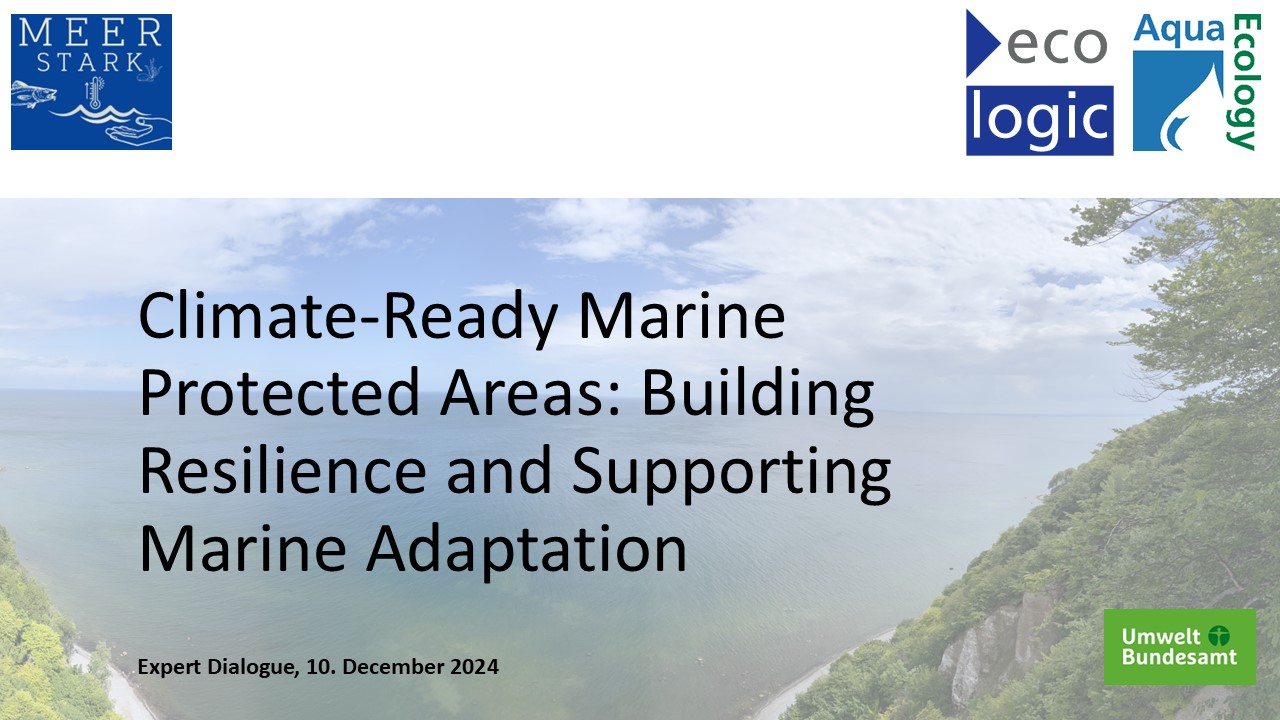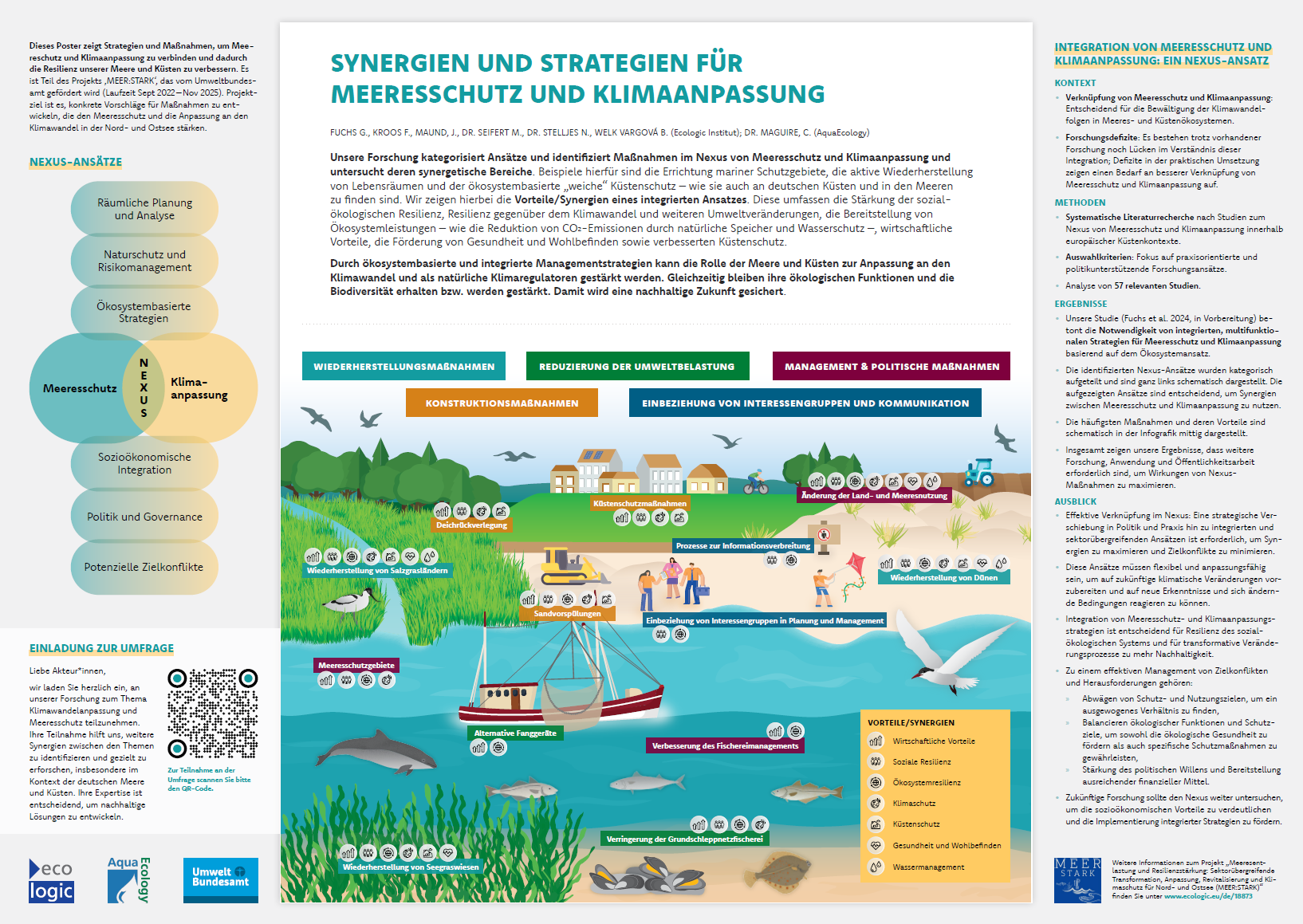
© 2025 Frontiers Media
Exploring Marine Conservation and Climate Adaptation Synergies and Strategies in European Seas as an Emerging Nexus
A review
- Publication
- Citation
Fuchs G, Kroos F, Scherer C, Seifert M and Stelljes N (2025) Exploring marine conservation and climate adaptation synergies and strategies in European seas as an emerging nexus: a review. Front. Mar. Sci. 12:1542705. doi: 10.3389/fmars.2025.1542705
This review by Fuchs et al. (2025) explores the potential synergies between marine conservation and climate adaptation strategies, which are critical for addressing climate change impacts in European coastal and marine areas. The article, published in Frontiers in Marine Science, identifies and evaluates integrated approaches that support both marine ecosystem protection and climate adaptation.
The Role of Coastal Ecosystems in Climate Change Adaptation and Mitigation
Europe's coastal ecosystems play a crucial role in biodiversity and the global carbon cycle. However, their capacity to contribute to climate adaptation and mitigation is increasingly threatened by human activities and climate change. These ecosystems act as natural buffers against climate risks, such as sea-level rise and coastal erosion, while also significantly contributing to carbon sequestration. Coastal habitats like salt marshes, mangroves, and seagrass meadows are "blue carbon" hotspots, with the potential to store large amounts of CO₂, thus aiding in climate change mitigation.
Integrated Approaches: Synergies Between Marine Conservation and Climate Adaptation
Despite extensive research in both fields, the linkages between marine conservation and climate adaptation remain underutilized. Fuchs et al. identify several "nexus approaches" that have the potential to integrate marine protection and climate adaptation. Key approaches include nature-based solutions (NBS), such as the restoration of coastal protection areas, the establishment of climate-smart marine protected areas (MPAs), and the development of hybrid coastal defense solutions. These approaches leverage ecosystem restoration to build resilience and offer multifunctional benefits that simultaneously address climate change and biodiversity conservation.
Challenges in Implementing Nexus Strategies
A central theme of the article is the need to address the challenges in implementing nexus strategies. While numerous scientific models and concepts exist, practical application remains fragmented. The article highlights that the integration of marine conservation and climate adaptation measures is often hindered by institutional barriers, inadequate governance structures, and lack of financing. Additionally, the social and economic implications of climate adaptation strategies are frequently overlooked, leading to conflicts among various stakeholders.
The Need for Robust Governance Mechanisms
To ensure the successful implementation of nexus strategies, the authors emphasize the importance of robust governance mechanisms. These mechanisms must be coordinated across all levels – from the European to the local level – to enable effective cross-sectoral collaboration. In particular, there is a need for more integrated planning in coastal and marine spatial planning to align marine conservation efforts with climate adaptation objectives.
The Importance of Stakeholder Engagement for Effective Outcomes
Another key element for the successful implementation of nexus strategies is stakeholder engagement. The authors note that the acceptance and support of local communities, as well as various sectors, are essential for the success of adaptation strategies. Stakeholder involvement must be based on transparent and equitable decision-making processes to overcome resistance and ensure the long-term sustainability of the measures.
Recommendations for Successful Implementation
The authors offer practical recommendations for implementing the identified nexus strategies. They advise developing tailored, site-specific solutions while leveraging existing political and financial frameworks. They stress the role of EU policy in ensuring coherence between different strategies aimed at both marine conservation and climate adaptation.







